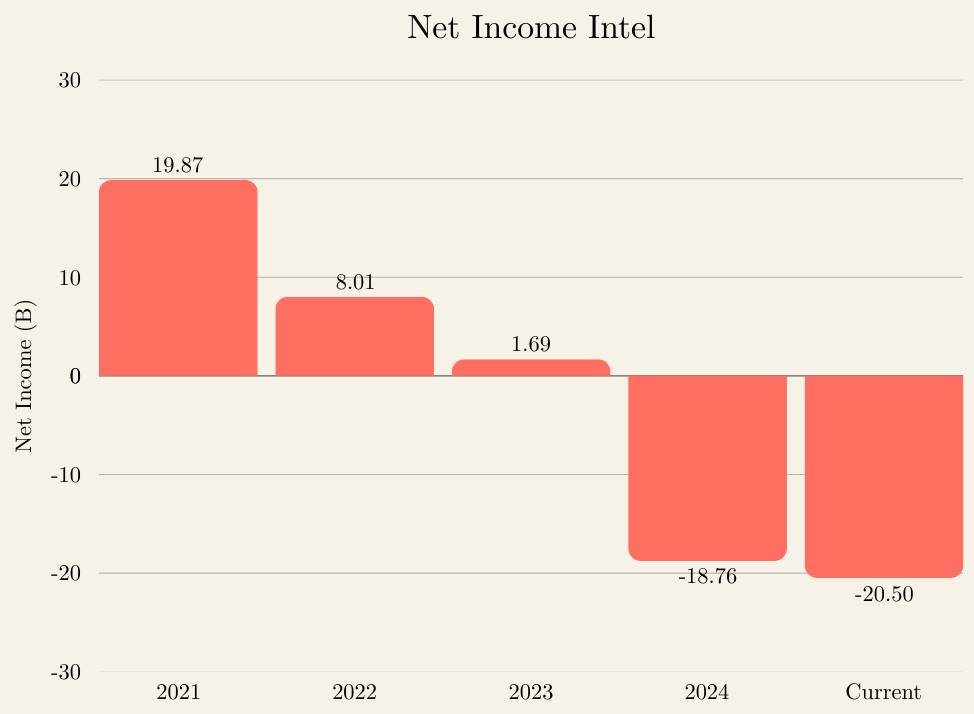
September 27, 2025
Overview Intel
Intel Corporation is an American multinational technology company headquartered in Santa Clara, California. Founded in 1968, it is one of the world’s largest semiconductor manufacturers. Intel designs and produces a wide range of products, including central processing units (CPUs) for personal computers and servers, graphics processing units (GPUs), data center solutions, networking products, and memory technologies.
The company operates globally, with manufacturing facilities in the United States, Ireland, Israel, and other countries. Intel supplies chips to computer manufacturers, cloud service providers, and enterprise customers worldwide, making it a critical player in the global technology supply chain.
Recent developments of Intel
In September 2025, Intel and NVIDIA announced a partnership to create new computer chips for data centers and personal computers. Intel will produce processors for AI-focused data centers. Additionally, the company will build combined CPU-and-GPU chips, called system-on-chips (SOCs), for PCs. These SOCs combine Intel’s processing power with NVIDIA’s graphics technology. As a result, computers can run demanding applications and AI tasks more efficiently.
NVIDIA will also invest $5 billion in Intel’s stock at $23.28 per share, pending regulatory approval. Moreover, the partnership brings together Intel’s chip-making expertise and NVIDIA’s AI technology. Intel continues to expand its manufacturing services and launch new CPU and GPU products for computers and data centers.
Around September 24, 2025, Intel reportedly approached Apple about a potential investment, according to Bloomberg News. The talks are in the early stages and may not lead to an agreement. Additionally, Apple was a longtime customer of Intel before it switched to using its own custom-designed chips in 2020. Since then, Apple’s chips have been mainly manufactured by TSMC, a company based in Taiwan. As a result, a potential investment in Intel could give Apple an alternative to TSMC for chip production. This may be important given potential geopolitical risks in Taiwan.
Moreover, Intel recently received additional investments. SoftBank invested $2 billion in the company, and the U.S. federal government acquired a 10% stake for roughly $10 billion to support the construction and expansion of Intel’s chip factories. These developments show continued interest in Intel from both corporate and governmental partners.
The numbers of Intel
Revenue ($B): 53.07 (06/30/2025), 53.10 (2024), 54.23 (2023)
Gross Profit Margin (%): 29.76 (06/30/2025), 32.66 (2024), 40.04 (2023)
Operating Margin (%): -8.29 (06/30/2025), -8.87 (2024), 0.06 (2023)
EBIT ($B): -12.45 (06/30/2025), -11.98 (2024), 0.31 (2023)
EBITDA ($B): -0.51 (06/30/2025), -0.60 (2024), 9.91 (2023)
Net Income ($B): -20.50 (06/30/2025), -18.76 (2024), 1.69 (2023)
Normalized EPS ($): -0.30 (06/30/2025), -0.13 (2024), 1.04 (2023)
Dividends per share ($): 0.13 (06/30/2025), 0.38 (2024), 0.74 (2023)

Behind the numbers
Intel’s financial performance has weakened significantly in recent years. Net income swung from a modest $1.69 billion in 2023 to a loss of $18.76 billion in 2024, and $20.50 billion in the first half of 2025.
Normalized EPS, which removes one-time items, has also become negative, suggesting that these losses reflect ongoing operational challenges rather than isolated events. Margins and profitability measures have deteriorated as well, showing that Intel is currently spending more than it earns from its operations.
The company faces strong competition from peers such as NVIDIA and AMD, which have been growing faster and capturing market share in CPUs, GPUs, and AI-related chips. These numbers highlight Intel’s current struggles rather than a completed turnaround.
Outlook & key considerations
Intel’s financial performance has been weak in recent years. Moreover, the company faces ongoing challenges in competing with peers such as NVIDIA and AMD.
The recent $5 billion investment from NVIDIA, along with confirmed investments from SoftBank ($2 billion) and the U.S. federal government (10 % stake for roughly $10 billion to support chip factories), provide both capital and technological support for Intel. Additionally, the company is exploring potential partnerships with Apple. If these materialize, they could further strengthen Intel’s position. These moves offer potential for a recovery, particularly in AI-focused chips and advanced manufacturing.
However, it is unclear whether these partnerships and investments will be enough to fully reverse Intel’s losses. Execution remains critical. The company must close the technological gap with competitors, scale production, and successfully bring new products to market.
Recommendation: Hold
We recommend a Hold on Intel. The company faces significant financial and operational challenges, including recent net losses and strong competition from NVIDIA and AMD. However, confirmed investments from NVIDIA, SoftBank, and the U.S. federal government, along with potential partnerships with Apple, provide opportunities for a turnaround in AI-focused chips, personal computing, and foundry services. Investors should monitor execution, product launches, and partnership outcomes before considering a more bullish stance.

This outlook is based on a 12- to 18-month view. This analysis is for informational purposes only and does not constitute professional investment advice. Readers should conduct their own research or consult a financial advisor before making investment decisions.
Keep learning with us!
Stay informed and grow as an investor! Follow Augustyn Analytics on Instagram and TikTok for daily business news, short educational videos, and practical tips to help you make smarter investment decisions.



